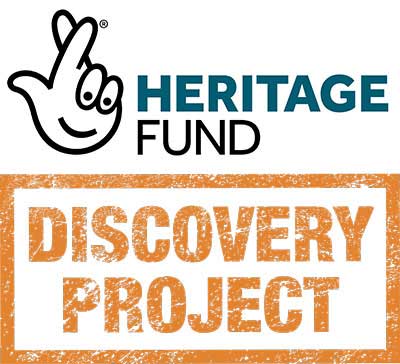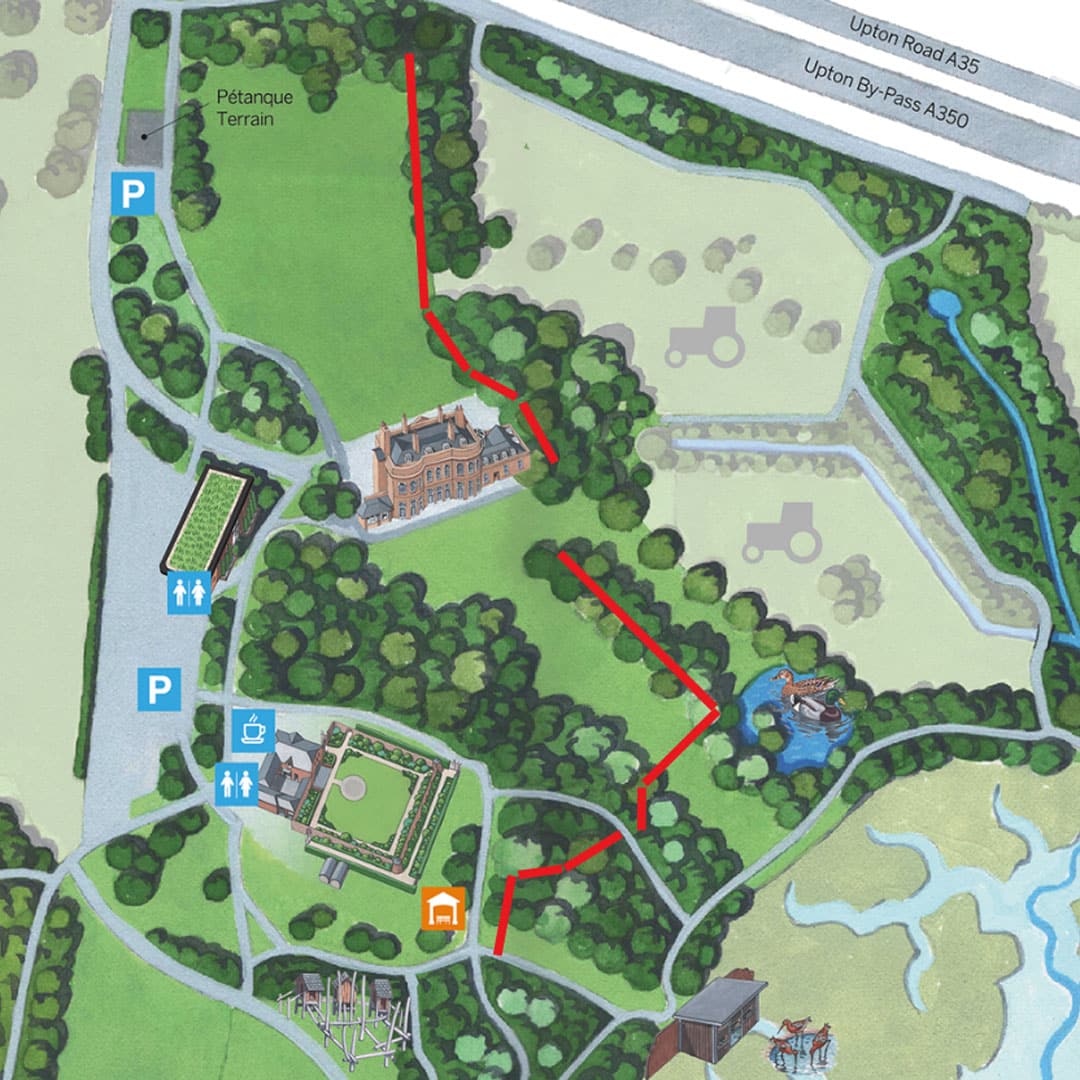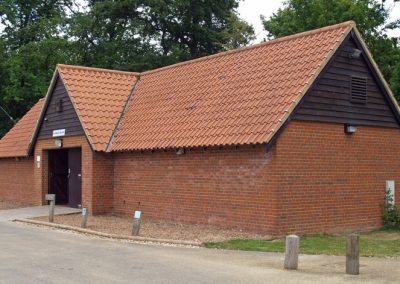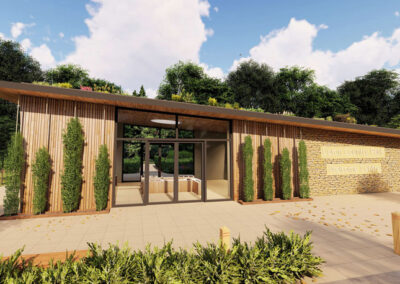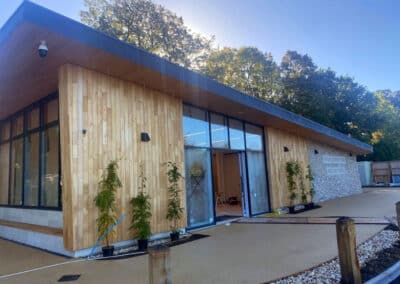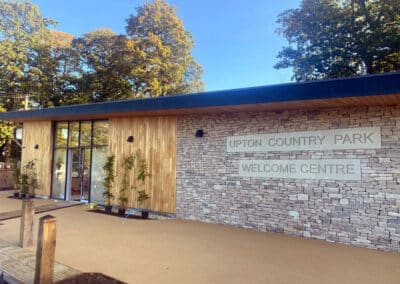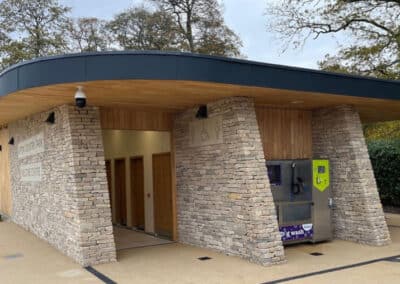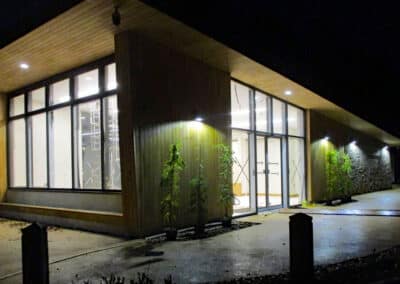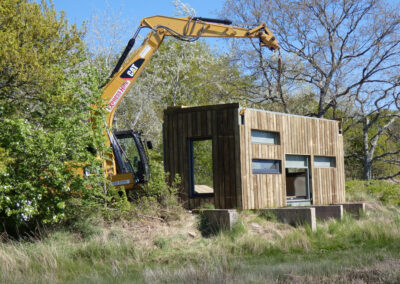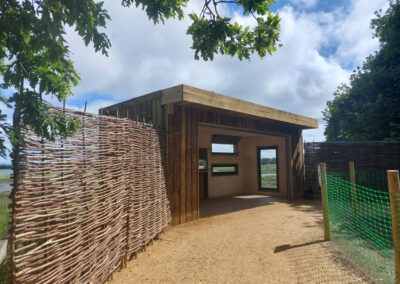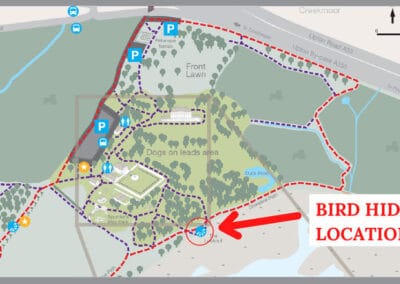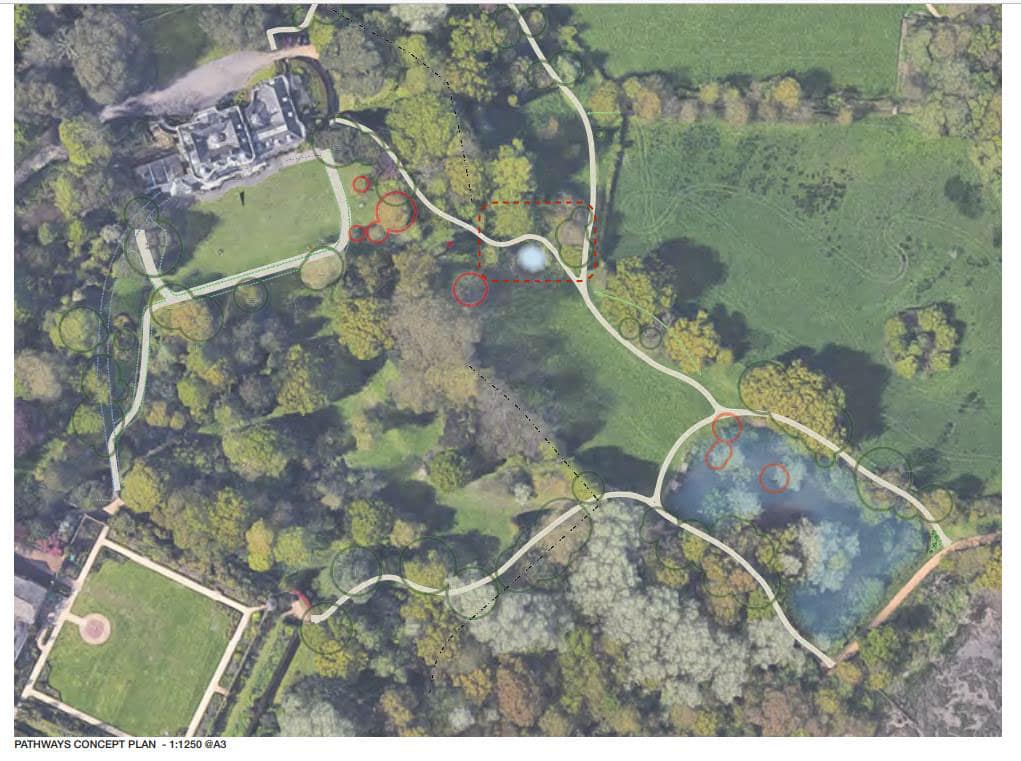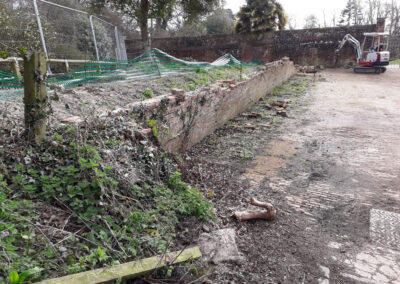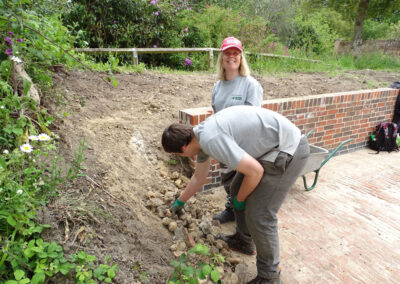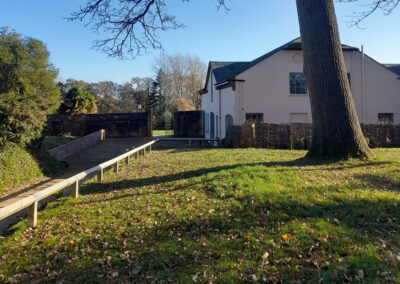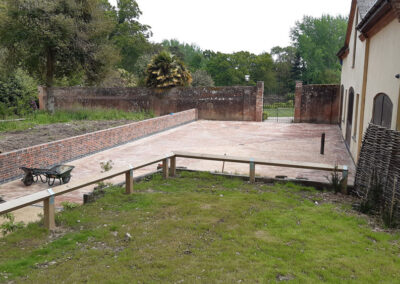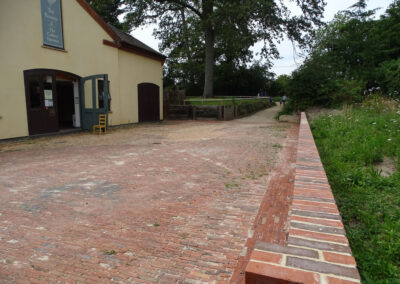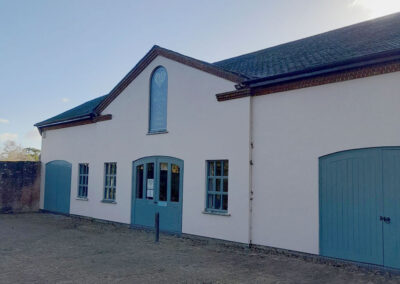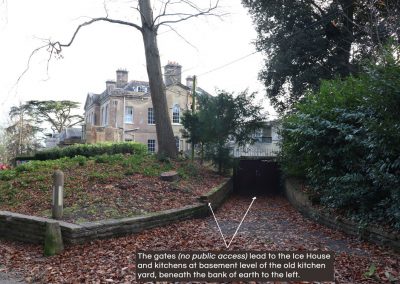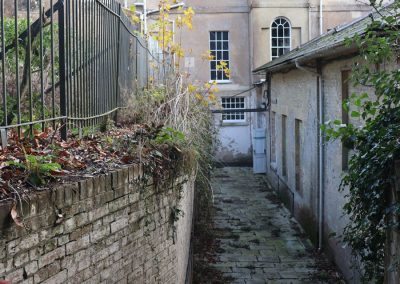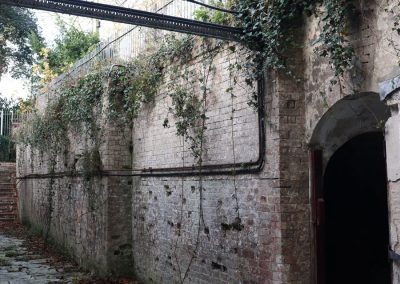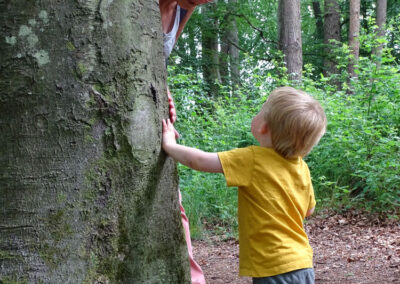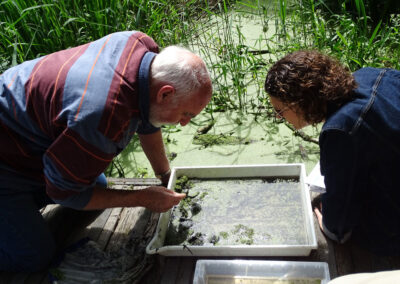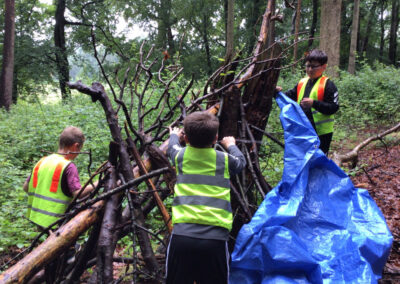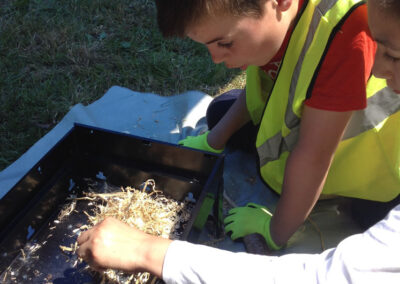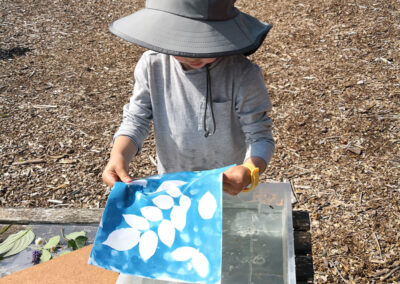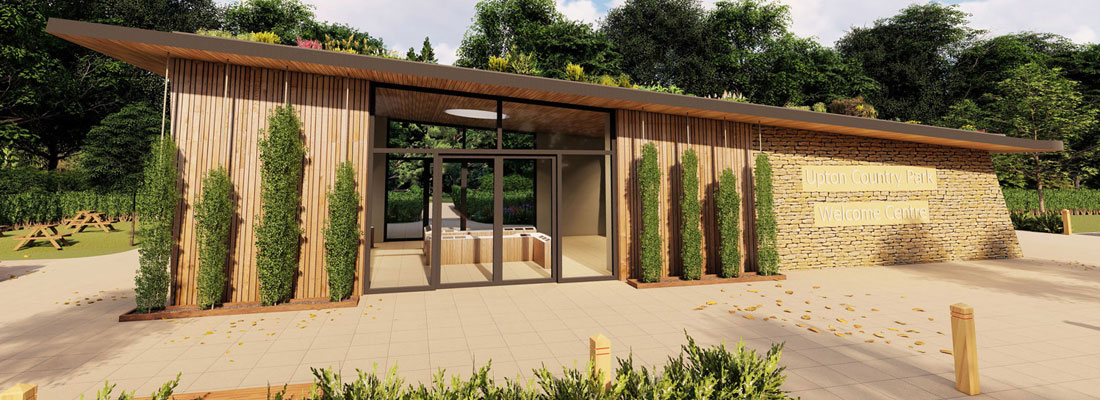
The Discovery Project
A National Lottery Heritage Fund Programme
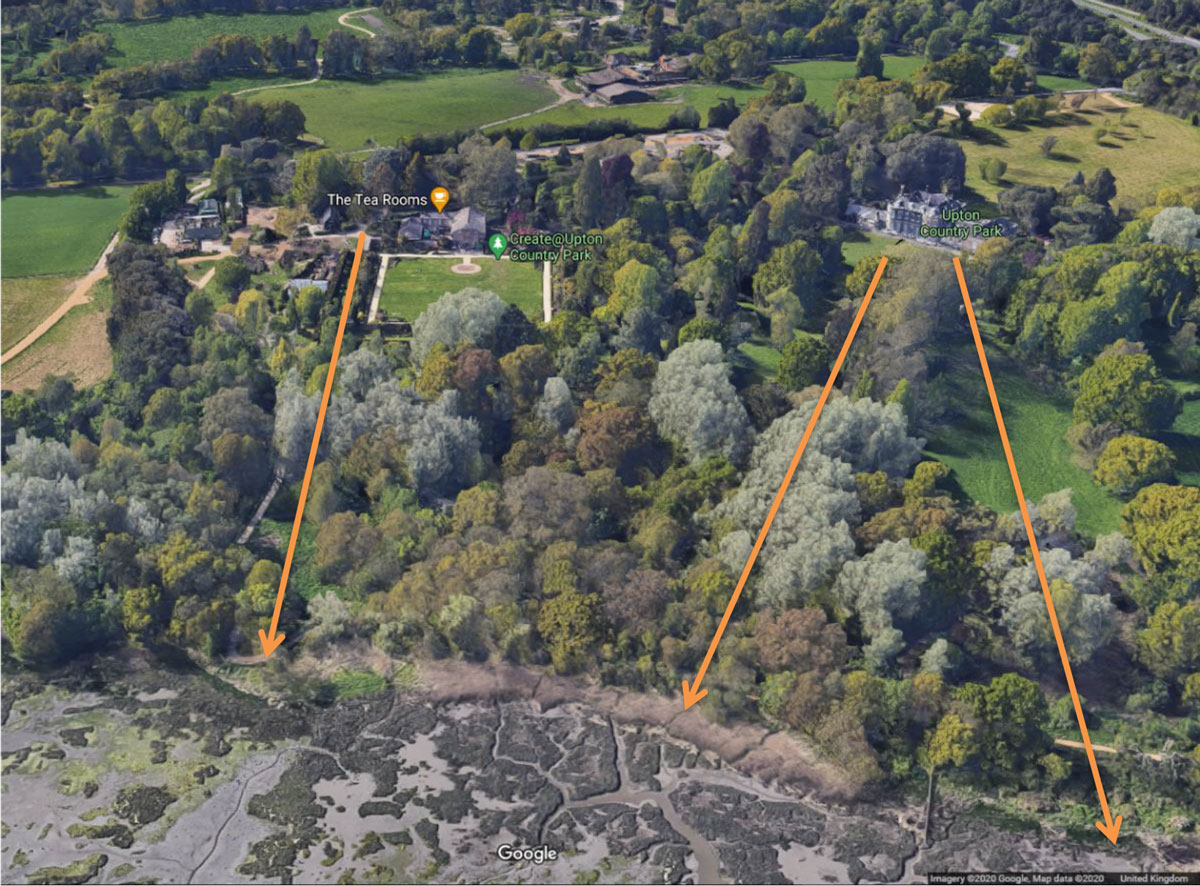
What’s Happening?
DISCOVERY PROJECT WORKS last updated August 2023, presented in line with our three project themes – People, Landscape and Heritage
Heritage
Restoring & replacing estate fencing 2023
This autumn Millers Fencing Ltd are to complete a programme of restoration and replacement of the historic boundary estate fence surrounding the Pleasure Grounds.
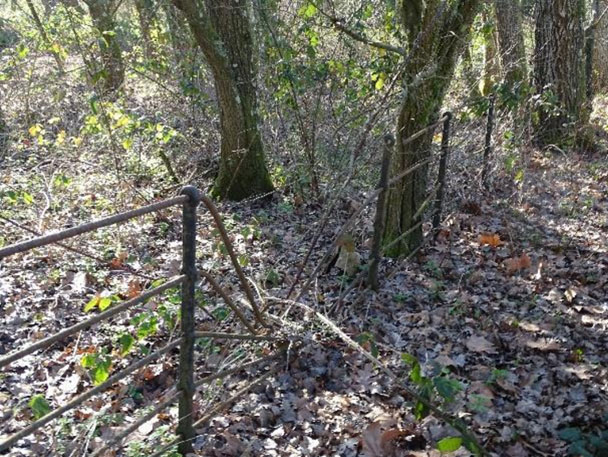
The fence previously separated the formal gardens around Upton House, from the surrounding historic agricultural fields.
Due to start on Monday 4th September, operating Mon-Fri only, Millers Fencing will work from the northernmost point shown on the map below, and continue around towards the winter gardens in the south. It’s anticipated that the project will be completed by October half term.
These improvements will further enhance the ongoing restoration of the park’s historical landscape.
People
The new Welcome Centre
In January 2022 work began on the new Welcome Centre, which replaces the toilet block located in the main car park. This modern new facility creates a gateway to the Country Park and a real sense of arrival. It was officially opened by the Mayor of Poole, Cllr Tony Trent, on Friday 16th December .
Below is a photo of the old toilet block that was demolished to make room for the new building, and an artists impression of the design which received planning permission in 2019; followed by pictures taken toward the end of the build by our main contractors, Greendale Construction of Poole
A new bird hide 2022
Shoreline vegetation clearance was undertaken in January, ahead of the nesting season, in preparation for the installation of a new bird hide overlooking Holes Bay.
The bird hide, which was built off site and craned into place in April, was opened to the public in June, creating opportunities to spot internationally significant bird species within Poole Harbour.
Landscape
Restoring historic pathways 2022
During summer 2022 we carried out a schedule of improvement works which aimed to repair and restore pathways true to the original pleasure grounds design.
Work started on 20th June, and was completed by the end of August 2022. Despite summer being such a busy time in the Country Park, it is the best time to undertake this essential work as the ground is dry and hard and in the best condition for relandscaping.
What will the work achieve?
As well as essential drainage maintenance works, this work will realise the vision, as part of the Discovery Project, to restore historic pathways that were part of the original pleasure grounds of Upton House. The work will also restore and widen existing paths, giving better access for all park users
How do we know what the pleasure grounds looked like in the past?
We have carried out detailed research and uncovered historical maps which date back to Christopher Spurrier’s time. An archive of photographs from the beginning of the 20th century also helps shape our understanding of the grounds.
Similar examples of a Regency Pleasure Ground can also be noted at other estates elsewhere in the country, for example Kenwood House in London, Chatsworth Park in Derbyshire, and Kingston Lacey in Wimborne.
Will this work have an impact on the trees in the Country Park?
The grounds contain an abundance of trees valuable to the quality of the setting, as well as in arboricultural and ecological terms. Proposed pathways come into close proximity with existing trees frequently, and a ‘no-dig’ construction method has been proposed, which will ensure any negative impacts are minimised.
Finished pathway levels will be set above existing levels, necessitating the making good of levels either side of the path in such a way that the path appears suitably set within the ground plane from key viewpoints.
What materials will be used for this work?
We intend to surface pathways in a locally supplied, self-binding gravel finish, without an edge, to match recently installed paths in the SANG area to the south of the Country Park. This surface is considered optimum in terms of matching other surfaces around the grounds, providing a path material that upgrades access routes in terms of accessibility, and is appropriate to the setting of the historic House and landscape.
Reinstating historic views & vistas 2022
In January work was undertaken to restore the historic views and vistas from the south front of the house and gardens towards Holes Bay – see the vistas we are restoring.
Specimen Oaks that originally framed the views can still be seen today; it is thought that some of these amazing trees may be more than 400 years old.
We removed invasive trees (such as Poplar) and scrub, whilst also protecting and enhancing the environment for our older Oaks and supporting our wildlife. This was achieved by:
- halo thinning, a woodland management technique that involves cutting away excess trees, vegetation and shrub, providing space for the older native oaks to flourish and promoting a more nutrient-rich woodland habitat.
- crown lifting which will increase the clearance between ground level and the lower branches of trees, allowing more light to penetrate the ground which in turn encourages wildflower growth.
This project is supported by Historic England, Natural England, Dorset Wildlife Trust, Birds of Poole Harbour and the National Trust.
Heritage
The Stable Yard, Fowl Shed & Dog Kennels 2021
Work to restore the collapsed drainage under the Grade II* listed Stable Yard was completed in November 2021. The brick pavers were lifted, the drainage systems restored and the bricks carefully re-laid. The retaining wall has been rebuilt and the landscaping behind it reinstated to allow the re-establishment of a bank of beautiful wildflowers. The Tea Rooms have also been repainted using heritage colours.
The Stable Yard, before & after
The Fowl Shed has been removed and the materials reused in the restoration of the listed Edwardian Dog Kennels; that building has been sympathetically restored and is now a usable building.
Landscaping work around the Kennels continues by our volunteers and has revealed the original brick pathways and steps into the building.
The Driveway & Ice House
Encroaching Laurel has been removed from the driveway. This has opened up the views of the House as the Spurriers intended back in 1818, and restores the original impact that the House would have had on a visitor approaching along the driveway.
The Beech and Sweet Chestnut trees next to Upton House have been removed due to conservation concerns for the House’s west wing. The weight of trees and soil was causing damage to the structure of the Ice House which is located beneath them; this work conserves our important heritage.
Also in 2021
- We trialled our new learning programme with schools, ready to launch our new Key stage 1 and 2 sessions in January 2022.
- In June we introduced our Puddle Jumpers Forest School and Roots & Shoots Grandparents and Tots club, run with the wonderful facilitators from the Urban Heaths Partnership, delivering regular, well-attended activity sessions.
- Following the popularity of our online lockdown activity packs in 2020, the Fox & Cubs Club for Dads and kids became a regular favourite in the Park.
- LivingWell: our free 5-week ‘Foundations to Wellbeing’ course with BCP Skills and Learning had a very successful initial run in 2021, with a second course running throughout November. LivingWell returned in 2022 with courses in March and June; for details and booking information please visit www.webenrol.com/skillsandlearningace
- Working with the Dorset Youth Justice Service and Virtual Schools, we started the Discover You conservation and employability course, providing experience in conservation and building employability skills for youth offenders and those at risk.
- Our Research Volunteers underwent interpretation training from the experts at Imagemakers to assist them in the creation of our new Welcome Centre content.
- Our Duck Pond was re-invigorated! With the support of our hard-working Practical Conservation volunteers, the team cleared overgrown vegetation in and around the pond and repaired the timber banks, providing an improved habitat for our wildlife to enjoy… including the ducks!.
- 13 new oak trees, a Giant Redwood and a Blue Atlas Cedar were added to the new SANG open spaces in 2021.
- The new wildflower and grass seed sown by our volunteers in the spring was flowering alongside Upton House’s driveway as part of the restoration of our Georgian landscapes.
FAQs
Does the Country Park have any Tree Preservation Orders?
No, whilst the Country Park benefits from a wide variety of beautiful trees the estate does not have any Tree Preservation Orders. The team works very closely with BCP Council Arboriculture and Biodiversity Officers to ensure the current and new tree stock is managed and nurtured for future generations to the enjoy.
Why are you keeping some trees and not others?
The estate is fortunate to host trees in a variety of different settings, from native woodlands to individual specimen trees from around the world.
Unlike commercial timber woodland that encourages tall trunks and limited canopy, our tree stock is managed in a more open setting, enabling the tree canopies to develop and wildlife to thrive.
Fast growing species like Poplar (Populus albac) can quickly take over an area if left unmanaged, with new shoots called root suckers growing from the lateral roots of the main tree. This growth can quickly dominate other slower growing species, a situation that is particularly evident along our shoreline to the detriment of our lost historic vistas and shoreline meadows.
Oak trees however offer one of the most biodiverse habitats of any tree in the UK. They can support up to 280 species of insects, as well as a plethora of bird and other wildlife species.
With the support of BCP Council Arboriculture and Biodiversity Officers, the team continues to monitor some of our oldest veteran trees and ensure we provide and support a healthy and sustainable tree collection for our wildlife and future generations to enjoy.
Can you use the timber from unwanted trees?
Yes, we already use timber from the estate to create natural dead-hedges, play features and mini-beast homes. If suitable, larger windblown timber is also stored before being recycled to create bollards and posts.
Why are you planting non-native species?
Our planting scheme recognises and celebrates the estate’s past as a country manor house, providing a range of habitats and formal gardens for our wildlife and visitors to enjoy.
Within the Pleasure Grounds, a selection of non-native species have been chosen that are considered in-keeping with what would have been originally intended and available during the early 19th Century.
Planting across the wider estate is more complimentary to the natural setting. For example, during the restoration of our hedgerows we planted native species to provide valuable sources of food and cover for our wildlife to enjoy.

Newsletter
Sign up here for Park News updates

